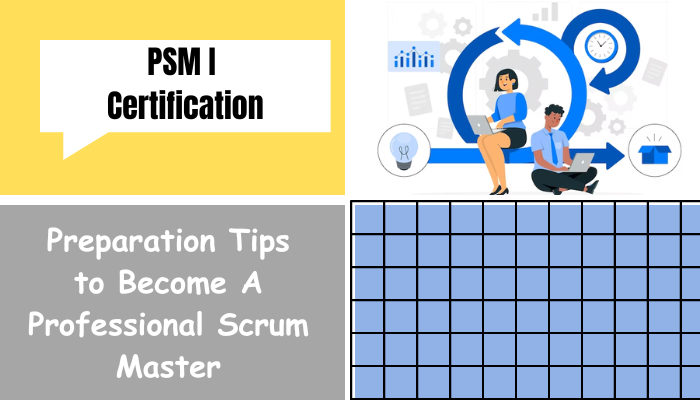Wednesday, 26 April 2023
How to Effectively Delegate Tasks as a Project Manager?
Monday, 24 April 2023
Tips for Staying Organized and On Track as a Project Manager
Why Staying Organized at Work is Important?
| Benefit | Description |
| Improved productivity | Being organized allows you to focus on tasks and complete them efficiently, leading to improved productivity. |
| Better decision-making | Staying organized allows you to access and analyze relevant information more quickly, which can help you make better decisions. |
| Increased efficiency | Being organized allows you to streamline your workflow and avoid wasting time on tasks that are irrelevant to your project. This can lead to increased efficiency and productivity. |
| Reduced stress | Being organized can help you feel more in control of your work, which can reduce stress and increase job satisfaction. |
| Improved communication | When you are organized, sharing information and collaborating with team members and stakeholders is easier. This can lead to improved communication and better outcomes for your project. |
| Increased credibility | When you are organized, you are more likely to deliver successful projects on time and within budget. This can increase your credibility as a project manager and improve your reputation. |
Project Management Tips for Staying Organized at Work
Tips for Staying on Track as a Project Manager
| Tip | Description |
| Define Clear Goals | Identify the specific goals of the project and communicate them to the team. This helps everyone stay focused on what needs to be accomplished |
| Create a Project Plan | Develop a plan that outlines the project’s tasks, resources, and timeline. This helps you stay organized and on schedule |
| Keep the Team Informed | Regularly communicate with the team about the progress of the project and any changes that need to be made. This helps ensure that everyone is working towards the same goals |
| Monitor Progress | Regularly check in on the project’s progress and make adjustments as needed. This helps you stay on track and meet deadlines |
| Manage Risks and Issues | Identify potential risks and issues impacting the project and develop contingency plans to address them. This helps prevent delays and keeps the project on track |
| Stay Organized | Use tools like project management software, calendars, and task lists to stay organized and manage your time effectively |
| Seek Help When Needed | Don’t be afraid to ask for help or delegate tasks when necessary. It’s better to ask for help than to let the project fall behind schedule |
Friday, 21 April 2023
The Future of Project Management: Trends and Predictions
Introduction
The role of technology in project management
The rise of remote work and distributed teams
Agile project management
Project management in the gig economy
The importance of soft skills in project management
Artificial intelligence and machine learning in project management
The impact of blockchain on project management
The future of project management certifications
Project management as a service
The rise of data-driven project management
Predictive analytics in project management
The impact of project management on business strategy
Challenges of the future of project management
Wednesday, 19 April 2023
The Future of Risk Management: Technology and Innovation in Risk Assessment
Introduction
The Role of Technology in Risk Management
Automation
Big Data Analytics
Artificial Intelligence
Cybersecurity
The Impact of Innovation in Risk Management
Predictive Analytics
Blockchain Technology
Internet of Things (IoT)
Monday, 17 April 2023
Benefits of Six Sigma
Introduction
History of Six Sigma
Understanding Six Sigma
Benefits of Six Sigma
Increased efficiency
Cost savings
Improved customer satisfaction
Better decision-making
Employee engagement
Competitive advantage
Conclusion
Saturday, 15 April 2023
How to Build a High-Performing DevOps Team?
Importance of Building a High-Performing DevOps Team
Tips to Build a High-Performing DevOps Team
Friday, 14 April 2023
Prince2 vs. PMP: Which Project Management Certification Is Right for You?
1. Introduction
2. PRINCE2 Certification
3. PMP Certification
4. PRINCE2 vs. PMP
5. Which Certification is Right for You?
6. Conclusion
Wednesday, 12 April 2023
The Impact of Artificial Intelligence on Project Management
Why is Artificial Intelligence Used in Project Management?
Stats on the Impact of AI on Project Management
Impact of AI on Project Management
Negative Impacts
How Will Project Managers be Impacted by Artificial Intelligence?
Benefits of Artificial Intelligence in Project Management
Will AI Replace Project Managers?
Friday, 7 April 2023
How to Implement Scrum in Remote Teams?: Get to Know
Explanation of Scrum
Importance of Scrum in Remote Teams
Steps to Successfully Implement Scrum in a Remote Team
Setting Up the Team
Establishing Roles and Responsibilities
Planning and Execution
Tools and Technology
Managing and Tracking Progress
Overcoming Challenges
Wednesday, 5 April 2023
PSM I: Understanding the Professional Scrum Master Certification
If you want to take a career in agile development to the next level, then the Professional Scrum Master, PSM I certification is a great way to demonstrate your expertise and commitment to the field. This article covers valuable tips for passing the PSM I exam on your first attempt and getting certified to set your Scrum career.
What is the PSM I Certification?
The PSM I certification is a globally recognized certification for Scrum Masters, which demonstrates a strong knowledge of the Scrum framework and its application in real-world scenarios. It is offered by Scrum.org, an organization founded by Ken Schwaber, one of the co-creators of Scrum.
Why is the PSM I Certification Important?
The PSM I certification is essential for several reasons.
Prove Your Scrum Knowledge with the PSM I Certification:
First, it demonstrates to potential employers that you have a deep understanding of Scrum and are committed to the principles and values of agile development. The certification can make you a more attractive candidate for job opportunities and can also increase your earning potential.
Improve Your Skills As A Scrum Master with PSM I Certification:
Additionally, the PSM I certification can help you improve your skills as a Scrum Master. The certification exam tests your knowledge of Scrum in real-world scenarios, which can help you identify areas where you need to improve your understanding and application of Scrum. By preparing for and passing the exam, you can better understand Scrum and become a more effective Scrum Master.
How to Prepare for the PSM I Certification Exam?
Avail the PSM I Resources:
Several resources are available to prepare for the PSM I certification exam. First, you can review the Scrum Guide, the definitive guide to Scrum provided by Scrum.org. This guide provides a detailed overview of the Scrum framework, including its roles, events, artifacts, and rules.
Also Read:
Join the Training:
In addition to the Scrum Guide, several training courses can help you prepare for the PSM I certification exam. These courses cover various topics related to Scrum, including its history, principles, and practices. They also provide practice exams and other resources to help you prepare for the certification exam.
Take the Help of Online Community:
Finally, several online communities and forums are dedicated to Scrum and Agile development. These communities provide a wealth of information and resources that can help you improve your understanding and application of Scrum. They also provide a place to ask questions and get support from other Scrum practitioners.
Taking the PSM I Certification Exam:
To take the PSM I certification exam, you must first register for the exam on Scrum.org. The exam is a timed, online exam that consists of 80 multiple-choice questions. You have 60 minutes to complete the exam, and you must achieve a score of 85% or higher to pass.
The questions on the PSM I exam are designed to test your knowledge of Scrum in real-world scenarios. They cover a wide range of topics related to Scrum, including its roles, events, artifacts, and rules. To prepare for the exam, reviewing the Scrum Guide and taking practice exams is important to identify areas where you need to improve your understanding of Scrum.
Importance of Practice Tests in the PSM I Certification Preparation:
- Several practice test sources are available for the PSM I certification exam. Some training courses may provide practice exams as part of their curriculum, while others may offer them as a separate resource. Additionally, several online resources provide practice tests and sample questions for the PSM I certification exam.
- When taking PSM I practice tests, approaching them as you are taking the actual exam is important. Set aside a specific amount of time to take the practice test, and try to simulate the conditions of the actual exam as closely as possible. It can help you get familiar with the format and pacing of the exam and can also help you identify areas where you may need to work on your time management skills.
- After taking a practice test, be sure to review your results carefully. Identify areas where you performed well and areas where you struggled, and use this information to guide your further study and preparation. Focus on understanding Scrum's underlying concepts and principles rather than simply memorizing specific answers to questions.
Concluding Thoughts:
The PSM I certification is an important certification for Scrum Masters who are looking to demonstrate their expertise and commitment to the field. By passing the certification exam, you can improve your skills as a Scrum Master and increase your earning potential. With the right preparation and commitment, you can pass the PSM I certification exam and take your career in agile development to the next level.















